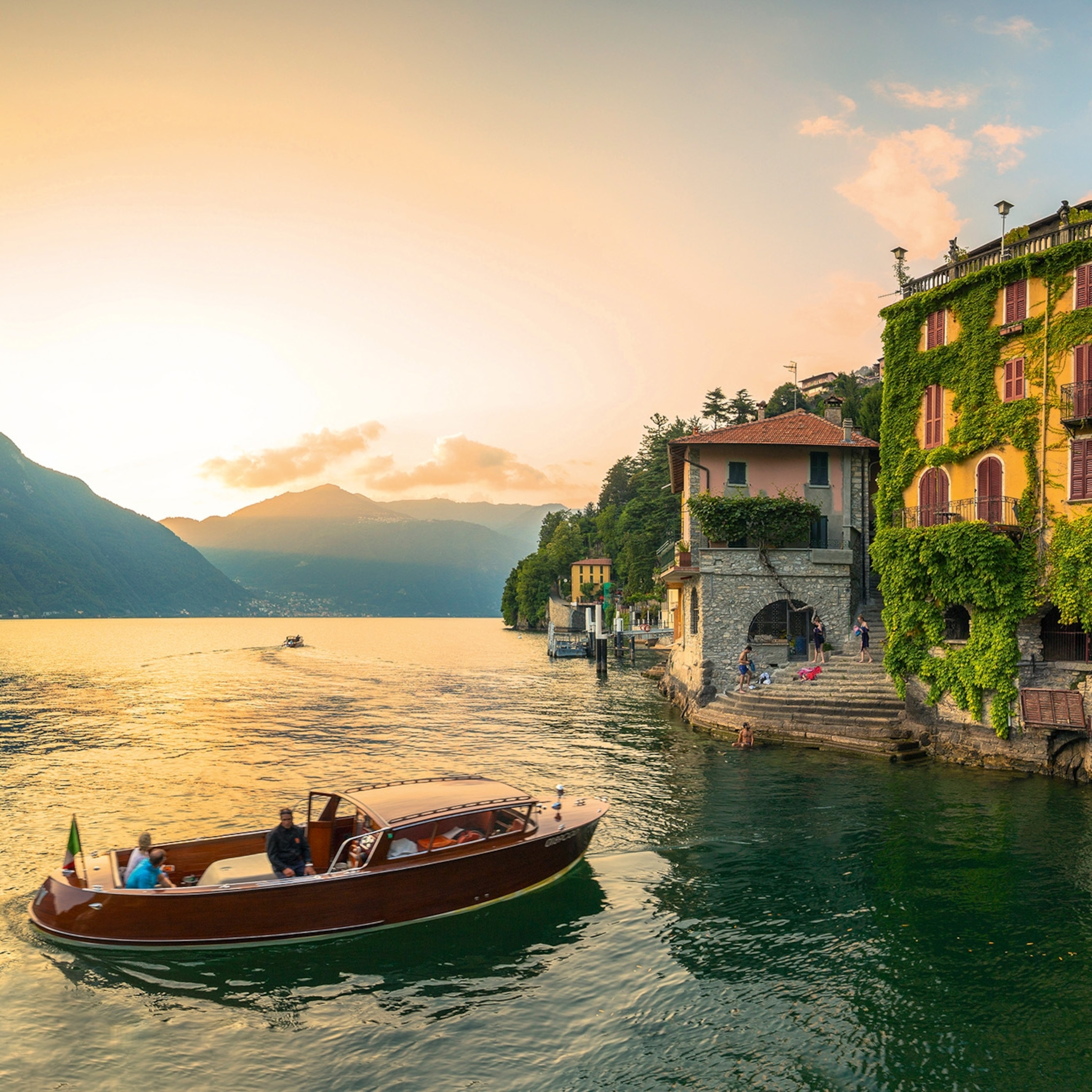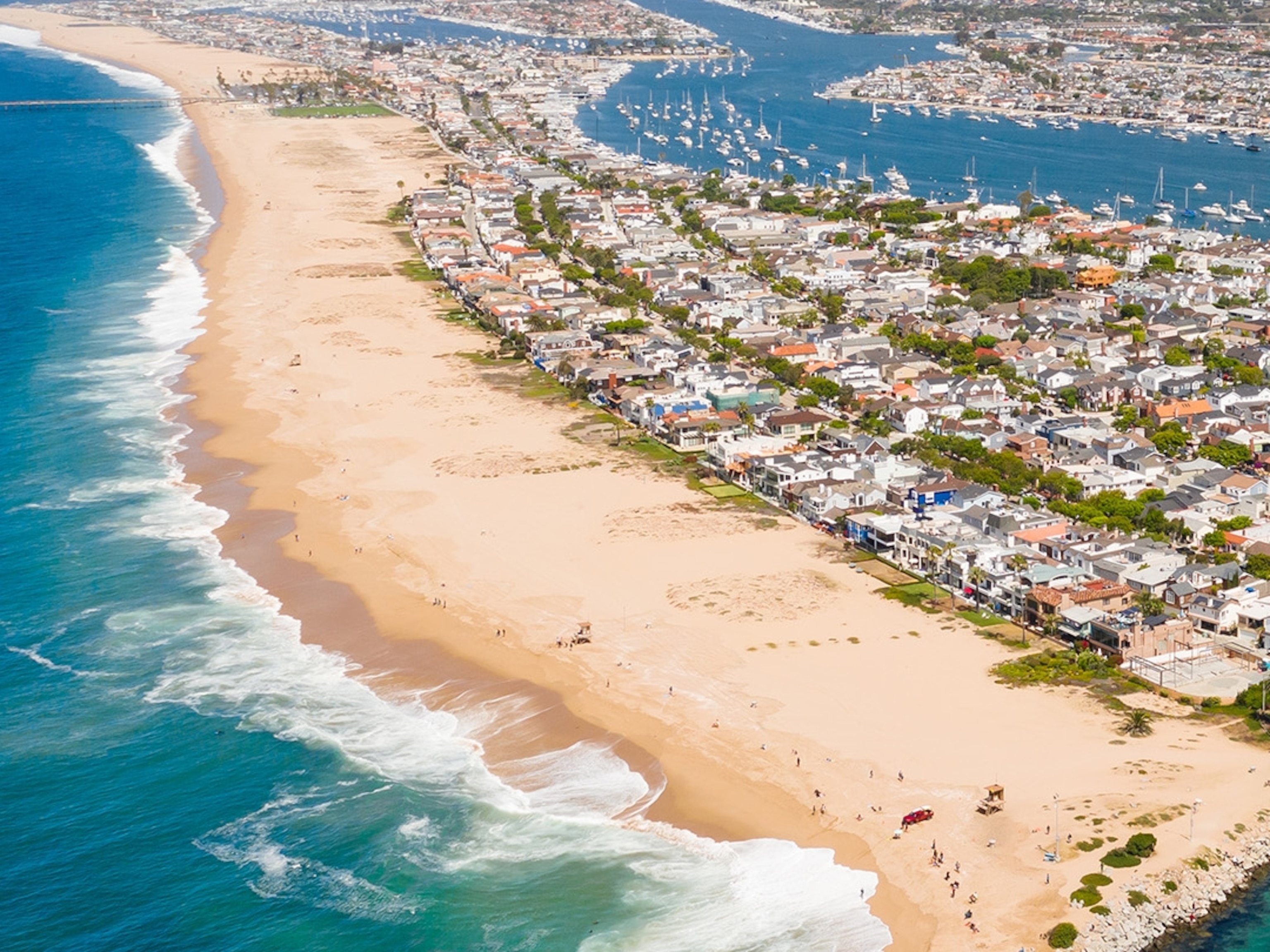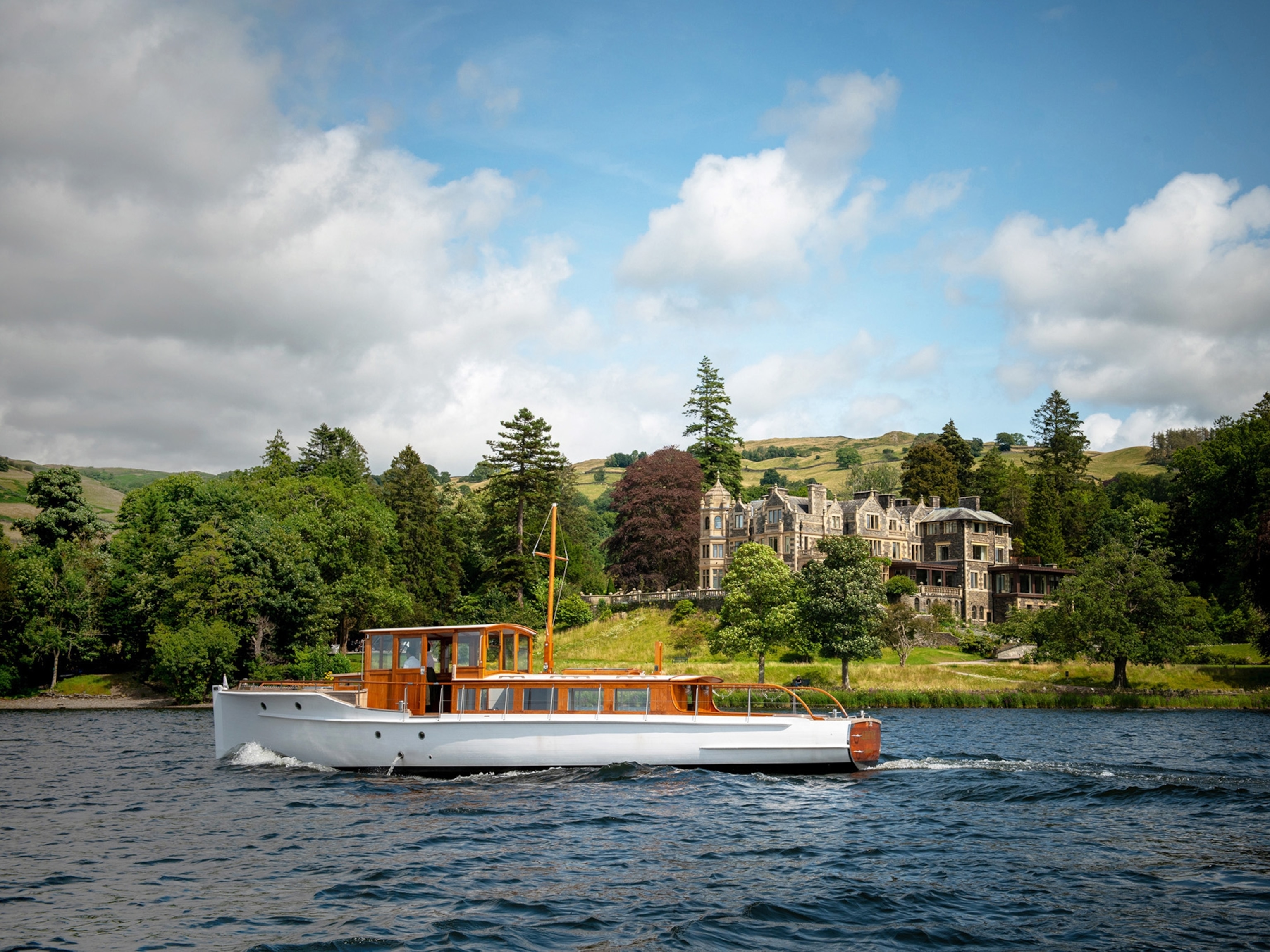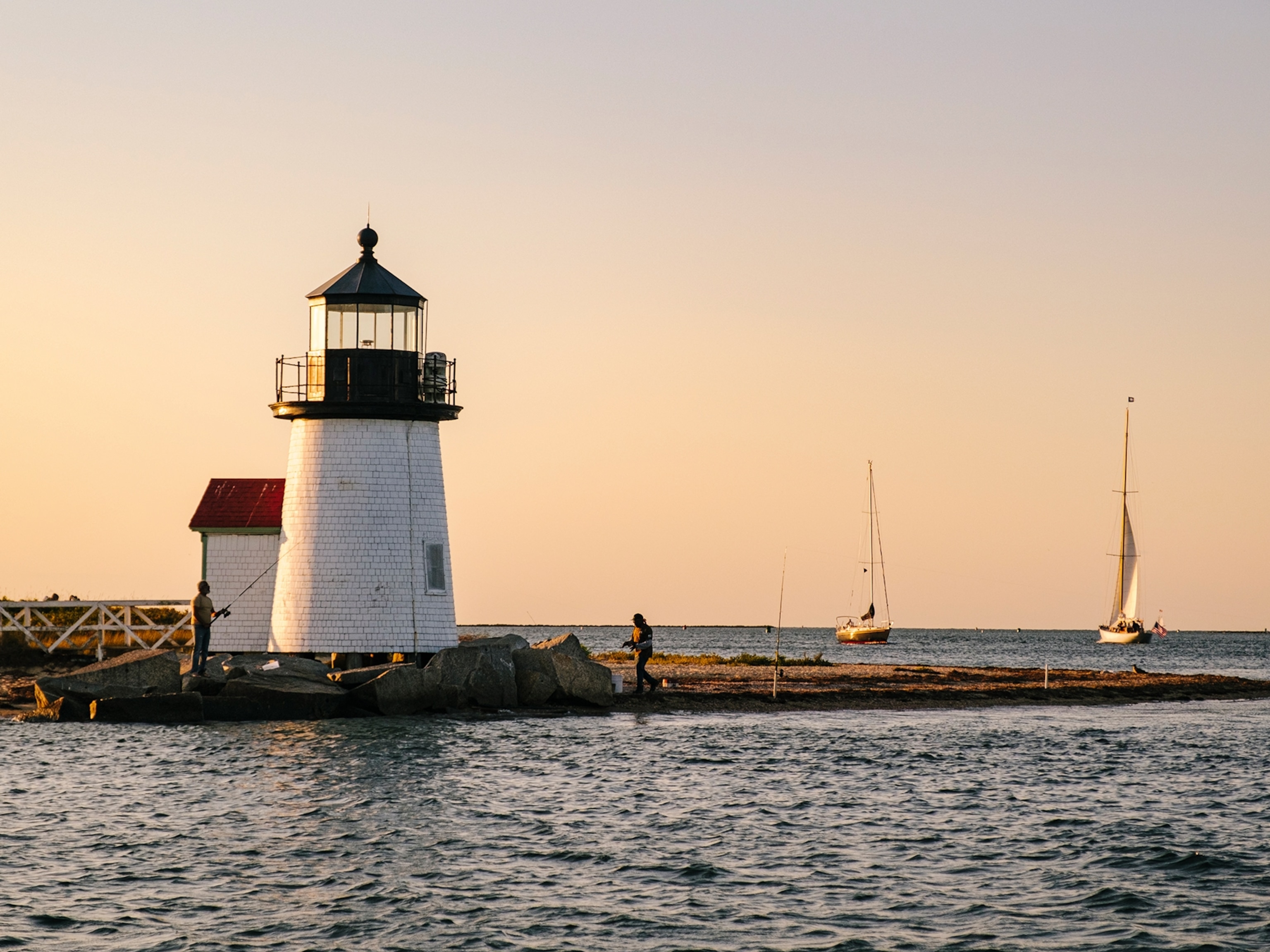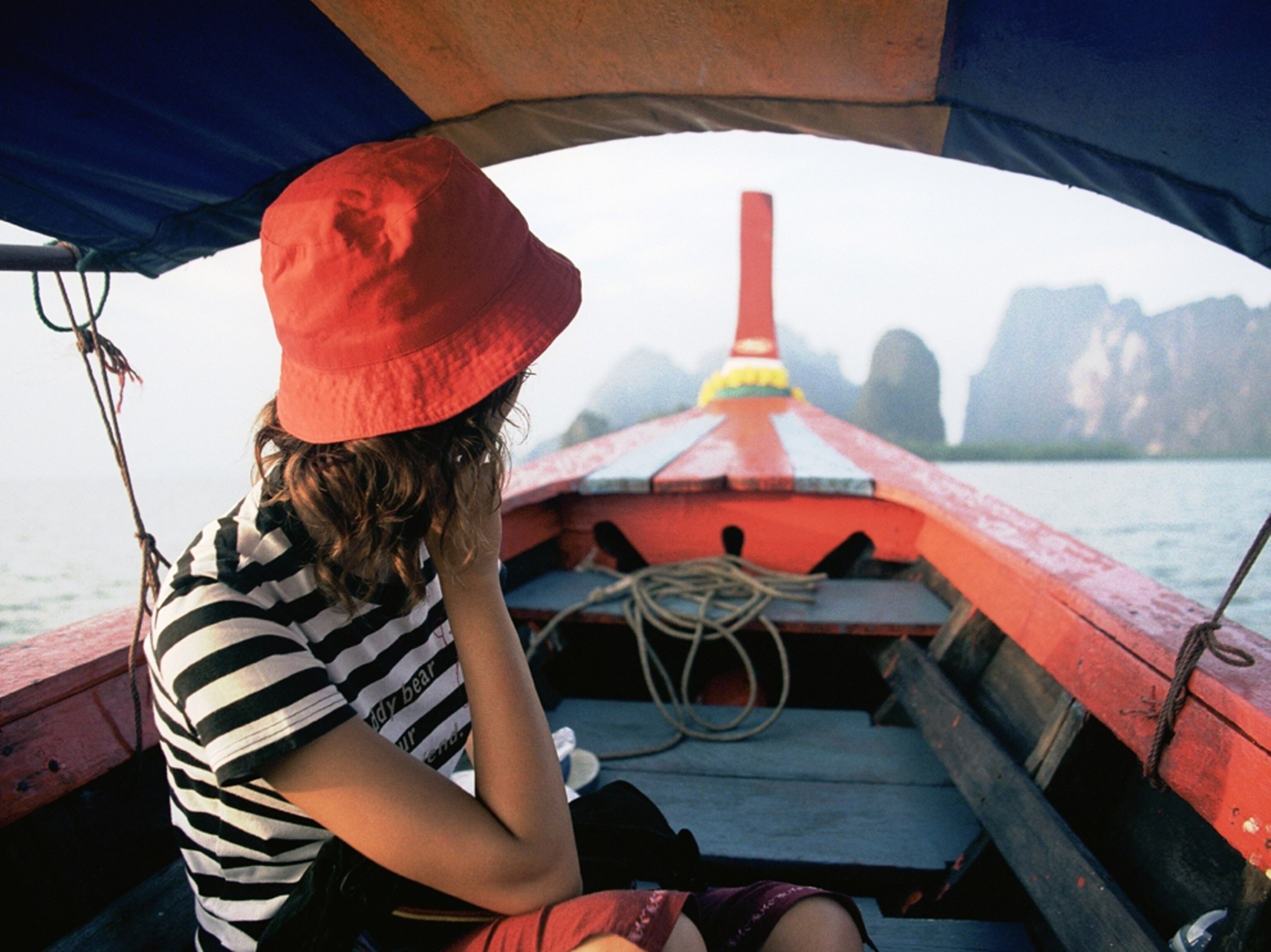
Boat Travel? Make Mine a Ferry
Real Travel
From the January/February 2011 issue of National Geographic Traveler
I pay the fare—about 50 cents—to the lady behind the window counter, pass through a creaky metal turnstile, step carefully along a wooden plank swaying in time with the lapping waves below, and board a ferryboat in Hong Kong’s Victoria Harbour. Heading up the stairs to the top deck, I manage to bonk my head, as usual, on the low overhang marked with a sign that says in English and Chinese, “Be Careful of Head.” My favorite seat is on the narrow bench built into the curve of the ferryboat’s port side, which is open to the air. I lean over the rail and take a deep breath of sea smells mingled with petrol fumes emitted by the Marine Police boats at the next dock. The gunmetal-gray launches are revving their engines impatiently, itching to begin their nightly chase after smugglers.
Then we’re off. I have taken this ferry ride from Sai Wan Ho, on Hong Kong island, across Victoria Harbour to Sam Ka Tsuen, in Kowloon, probably a hundred times, yet I’ve never noticed how many minutes—10? 12?—it lasts. Hong Kong is home to the famed Star Ferry, but years ago I discovered its humbler, less well-known cousin: this small public boat that plies a local route across a part of the harbor called Lei Yue Mun—Carp Passage.
It’s “my” ferryboat now. I usually catch a ride at the end of the week around sunset, when most Hong Kongers are enjoying a post-work happy hour. I guess the ride has become my happy hour. Boat travel is my relaxation, my meditation. It feels deep and elemental, in part, I expect, because boats are among the most ancient forms of human transport, in there with the foot. Archaeologists have found fragments of boats estimated to be 8,000 years old.
I know some of the world’s most interesting places lie in dry terrains far from coastlines—places where boats sail only in books and dreams. Yet a journey feels incomplete to me unless it includes at least some time moving over water; wherever I go in the world, I look for a way to get out on it. If a waterfront doesn’t exist, I’ll settle for a short ride—even a silly one, such as the pedal-powered floating swan I rented by the hour to cruise the pond in Tokyo’s Ueno Park. Actually, the shorter the ride, the more I enjoy it. During my college years I discovered I was a lousy sailor; on a cruise of the Intracoastal Waterway in New Jersey with a friend’s family, I spent the whole weekend curled up in a ball in my cabin, afflicted with a pneumatic headache that no amount of Dramamine or aspirin could relieve.
As a consequence, many of the classic seagoing voyages are missing from my “Do Before I Die” list. I’ll probably never sail across the Atlantic nor hopscotch down the Windward Islands of the Caribbean on a catamaran. Instead, I aim for watery sojourns on calm waters; and I try, when possible, to travel in my favorite kind of boat—the one I can row myself.
On one memorable summer vacation I paddled and portaged a canoe across the interconnected lakes and trails of the Boundary Waters region in upstate Minnesota. I have also maneuvered flat-bottomed pirogues through tangled jungle tributaries in Brazil’s Amazon region and kayaks through back channels in the Florida Everglades.
Dipping a paddle into still water and feeling the pull of the current as I glide along is pure pleasure. But what I really love about a one-person boat is its almost complete soundlessness. Adrift and afloat, you are probably as invisible as a human being can be in the natural world—all the better to spy on the beavers frolicking around their dam, the white egrets resting in mangrove trees, the shy sloth hanging upside down from a gnarly branch.
As wonderful as boat travel can be in the natural world, I find it even more wonderful when I follow the water routes of human commerce. In Bangkok, I walk down to the edge of a narrow klong, or canal, and hail a waiting long-tail boat as casually as if I were hailing a New York taxi. The motor grinds like a chainsaw, and my arms are soon soaked with spray from the grimy water—but there is no better way to immerse myself, literally, in Bangkok’s hidden canal-scribed city, where houses face toward the water, and wares and produce arrive by barge.
Still, my favorite type of boat travel remains the ferry, probably because I’m a city-bred person and the ferry was my very first boating experience. Many of the world’s great cities developed around some body of water; ferries soon followed, making them one of the most available forms of boat travel. In my experience, you can count on finding a terrific—and usually fairly cheap—ferry ride in most major cities. I try to skip boats frequented by tourists for new or lower-profile services, such as the ferry over to New York City’s Governors Island. In Sydney, Australia, and Auckland, New Zealand, riding the ferries allows me to rub elbows with local commuters—and I get to enjoy the best views as a bonus. When I travel to maritime cities such as Portland, Maine, and San Francisco, I make sure to plan a ferry day trip to an outlying island.
The joy of a ferryboat ride in a big city is in the contrast it offers. You pull away from the dock, and the crowds, traffic, heat, and noise fade into the distance. The sky grows larger; the daily roar dims; and in that temporary sanctuary of the floating world you are cut loose from the obligations, anxieties, and other details that always seems to clamor for attention. (Sometimes a little too loose; I suspect that is one reason why I always forget to “Be Careful of Head” when climbing to the top deck of the Sai Wan Ho ferry.)
I long ago chose to spend the biggest part of each year living in Hong Kong, the city of ferries. In fact, Hong Kong has so many ferry lines and ferries that I still haven’t ridden on all of them. I’m not sure whether there is a Chinese word to express this sort of traveler’s good fortune, but there ought to be.
- National Geographic Expeditions
The weathered wooden ferryboat bumps abruptly against the dock. The boatman calls out to his comrade to secure the thick rope, anchoring us once again to terra firma. The other passengers gather their parcels and children and impatiently rush to the gangplank.
I’m the last one ashore.

